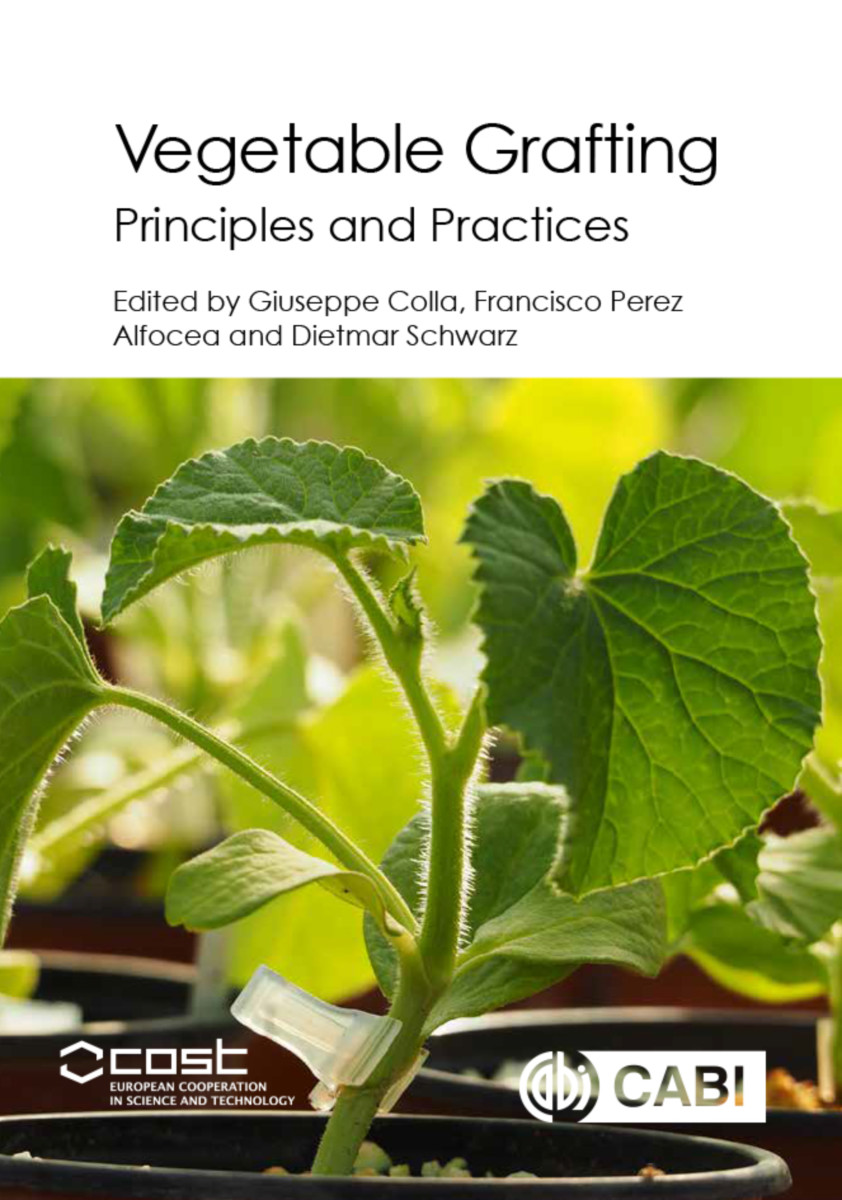Vegetable Grafting
Principles and Practices
- Publisher
CABI - Published
26th July 2017 - ISBN 9781780648972
- Language English
- Pages 296 pp.
- Size 6.75" x 9.5"
- Images tables, figures & color photos
Vegetable grafting is gaining considerable interest in research and practice as an alternative to fumigants, which are being phased out, to protect crops from soil-borne diseases. This book is derived from an EU COST action project and reviews the latest developments in the science and practices of vegetable grafting. Although aimed mainly at researchers, it is also concerned with translating the science into the field, hence the "practices" part which will be valuable to highly trained practitioners and extension workers.
1: Introduction to vegetable grafting
1.1: Importance and use of vegetable grafting
1.2: The process of vegetable grafting
1.3: Problems associated with vegetable grafting
1.4: Conclusions
2: Genetic resources for rootstock breeding
2.1: Genetic diversity
2.2: Genebank collections
2.3: Current usage of genetic material in rootstocks
2.4: Germplasm collection of other plant families
2.5: Concluding remarks
3: Rootstock breeding: current practices and future technologies
3.1: Introduction
3.2: Stacking traits: meiosis or grafting or both?
3.3: Developing stable, core collections of germplasm for breeding
3.4: Deploying genetic diversity for rootstocks
3.5: Grafting as a tool for genetic hybridisation and chimera production
3.6: Selection of improved rootstocks
3.7: Transgenic rootstocks
3.8: Rootstock registration and commercialization
4: Rootstock-scion signalling: key factors mediating scion performance
4.1: Introduction
4.2: Current knowledge of ionic and chemical signalling between rootstock and scion
4.3: Conclusions
5: Physiological and molecular mechanisms underlying graft compatibility
5.1: Introduction
5.2: Anatomical and physiological steps during graft union development
5.3: Role of secondary metabolites at the interface in graft incompatibility
5.4: Cell-to-cell communication between graft partners
5.5: Understanding the molecular mechanisms involved in graft union formation and compatibility.
5.6: Methods for examining graft union development and compatibility
5.7: Conclusions and future perspectives
6: Grafting as agro-technology for reducing disease damage
6.1: Introduction
6.2: The first step: Managing diseases in the nursery
6.3: Disease spread from the nursery to the field, the example of powdery mildew of watermelons
6.4: Intra- and interspecific grafting and their relations to diseases
6.5: Biotic or abiotic stress? Different responses of grafted plants to environmental conditions, the case of "physiological wilt", and germplasm selection for rational breeding
6.6: Grafted plants' response to nematodes
6.7: Commercial rootstocks and unknown genetics
6.8: Different mechanisms involved in disease resistance induced by grafting
6.9: Conclusions
7: Grafting as a tool to tolerate abiotic stress
7.1: Introduction
7.2: Temperature stress
7.3: Salinity stress
7.4: Nutrient stress
7.5: Stress induced by heavy metals and metalloids
7.6: Stress by adverse soil pH
7.7: Drought and flood stress
7.8: Conclusions
8: Quality of grafted vegetables
8.1: What is quality?
8.2: Rootstock effects on fruit quality
8.3: Effects of grafting on ripening and postharvest behaviour
8.4: Bio-physiological processes affecting fruit quality
8.5: Conclusion and perspectives
9: Practical applications and speciality crops
9.1: Establishment of grafted transplant under Mediterranean climate conditions
9.2: Recommendations for the use of grafted plants in greenhouses. The case of the Netherlands
9.3: Role of grafting in speciality crops
9.4: Conclusions and future perspective of vegetable grafting
10: Index
Giuseppe Colla
Giuseppe Colla is with DAFNE, Italy.
Francisco Perez-Alfocea
Francisco Perez-Alfocea is with Consejo Superior de Investigaciones Cientificas (CSIC), Spain.
Dietmar Schwarz
Dietmar Schwarz is with Leibniz Institute of Vegetable and Ornamental Crops, Germany.


